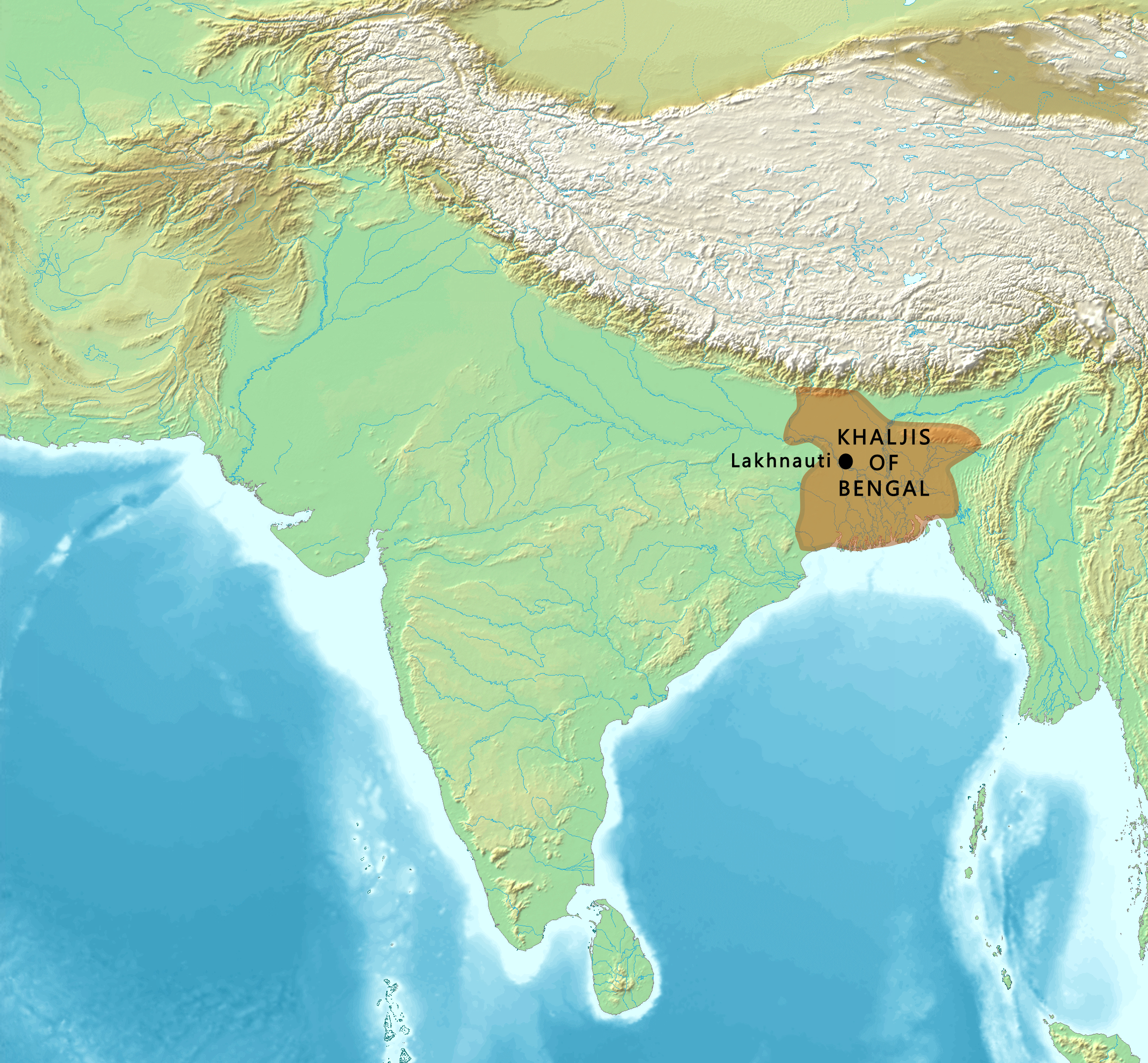|
Vikramasila
Vikramashila (IAST: ) was a Buddhist monastery situated in what is now modern-day Bihar in India. It was founded by King Dharmapala between the late eighth and early ninth century. It was one of the three most important Buddhist Mahaviharas of its time in India, along with Nalanda and Odantapuri. Its location is now the site of Antichak village near Kahalgaon, Bhagalpur district in Bihar. It was one of the largest Buddhist mahaviharas, with more than one hundred teachers and about one thousand students. It produced eminent scholars who were often invited by foreign countries to spread Buddhist learning, culture and religion including Atiśa and Ratnākaraśānti. Vikramashila was established by the Pala emperor Dharmapala (783 to 820 CE) in response to a supposed decline in the quality of scholarship at Nalanda. It was destroyed by the forces of Muhammad bin Bakhtiyar Khalji around 1193. History A number of monasteries grew up during the Pāla period in medieval Bengal an ... [...More Info...] [...Related Items...] OR: [Wikipedia] [Google] [Baidu] |
Jñanasrimitra
Jñānaśrīmitra (fl. 975-1025 C.E.) was an Indian Buddhist philosopher of the epistemological (''pramana'') tradition of Buddhist philosophy, which goes back to Dignāga and Dharmakīrti. Jñānaśrīmitra was also known as a Yogācāra Buddhist who defended a form of Buddhist idealism termed ''Sākāravada'' which holds that cognitive content or aspects of consciousness ("ākāras") are real and not illusory.Tomlinson, D.KThe Marvel of Consciousness: Existence and Manifestation in Jñānaśrīmitra’s ''Sākārasiddhiśāstra''.''J Indian Philos'' 50, 163–199 (2022). In addition to his philosophical works, Jñānaśrīmitra was also a skilled poet and a ''dvāra-paṇḍita'' (gate-scholar) of Vikramaśīla university. Among his many students who declared themselves to be his students or were declared by others include Ratnakīrti, Atiśa and Advayavajra among others. Jñānaśrīmitra was also well-known by Hindu and Jain thinkers and his name has been referenced in ... [...More Info...] [...Related Items...] OR: [Wikipedia] [Google] [Baidu] |
Muhammad Bin Bakhtiyar Khalji
Ikhtiyār al-Dīn Muḥammad Bin Bakhtiyār Khaljī, also known as Bakhtiyar Khalji, was a Turko-Afghan Military General of the Ghurid ruler Muhammad of Ghor, who led the Muslim conquests in the Indian subcontinent, Muslim conquests of the eastern Indian regions of Bengal and parts of Bihar and established himself as their deputy-ruler/governor, He was the founder of the Khalji dynasty of Bengal, ruling Bengal for a short period, from 1203 to 1227 CE. Khalji's invasions of the Indian subcontinent between A.D. 1197 and 1206 led to mass flight and massacres of monks, and caused damage to the traditional Buddhist institutions of higher learning in Northern India. In Bengal, Khalji's reign was responsible for the displacement of Buddhism. The leading centre of teaching for Mahayana Buddhism was Nalanda mahavihara, Nalanda. At the end of the 12th century, Bakhityar Khalji demolished the monastery in a brutal sacking . His rule is said to have begun the Muslim rule in India, Muslim r ... [...More Info...] [...Related Items...] OR: [Wikipedia] [Google] [Baidu] |
Bakhtiyar Khilji
Ikhtiyār al-Dīn Muḥammad Bin Bakhtiyār Khaljī, also known as Bakhtiyar Khalji, was a Turko-Afghan Military General of the Ghurid ruler Muhammad of Ghor, who led the Muslim conquests of the eastern Indian regions of Bengal and parts of Bihar and established himself as their deputy-ruler/governor, He was the founder of the Khalji dynasty of Bengal, ruling Bengal for a short period, from 1203 to 1227 CE. Khalji's invasions of the Indian subcontinent between A.D. 1197 and 1206 led to mass flight and massacres of monks, and caused damage to the traditional Buddhist institutions of higher learning in Northern India. In Bengal, Khalji's reign was responsible for the displacement of Buddhism. The leading centre of teaching for Mahayana Buddhism was Nalanda. At the end of the 12th century, Bakhityar Khalji demolished the monastery in a brutal sacking . His rule is said to have begun the Muslim rule in Bengal, most notably those of Bengal Sultanate and Mughal Bengal. Bakhtiyar ... [...More Info...] [...Related Items...] OR: [Wikipedia] [Google] [Baidu] |
Bhagalpur
Bhagalpur, historically known as Champapuri, Champa Nagari, is a city in the Indian state of Bihar, situated on the southern bank of the Ganges river. It is the Bihar#Government and administration, third largest city of Bihar by population and also serves the headquarters of Bhagalpur district, Bhagalpur division, and Bihar Police, Eastern Range. It is known as the Bhagalpuri silk, Silk City and also listed for development under the Smart Cities Mission by Government of India. It is the only district in Bihar after capital city Patna where three major higher educational institutions Indian Institute of Information Technology, Bhagalpur, IIIT Bhagalpur, Jawaharlal Nehru Medical College, Bhagalpur, Jawaharlal Nehru Medical College, Tilka Manjhi Bhagalpur University, TMBU, and Bihar Agricultural University, Agriculture University (BAU) are located and also Vikramshila, Vikramshila Central University is under construction next to the ruins of the medieval Vikramshila, Vikramshila Mah ... [...More Info...] [...Related Items...] OR: [Wikipedia] [Google] [Baidu] |
Somapura
Somapura Mahavihara (), also known as Paharpur Buddhist Vihara (), is a major Buddhist monastery (''mahavihara'') in Paharpur, Badalgachhi, Naogaon, Bangladesh. It is among the best known Buddhist viharas in the Indian Subcontinent and is one of the most important archaeological sites in the country. It was designated as a UNESCO World Heritage Site in 1985. It is one of the most famous examples of architecture in pre-Islamic Bengali architecture. It dates from a period to the nearby Halud Vihara and to the Sitakot Vihara in Nawabganj, Dinajpur. History A number of monasteries grew up during the Pāla period in ancient India in the eastern regions of the Indian subcontinent, comprising Bengal and Magadha. According to Tibetan sources, five great Mahaviharas (universities) stood out: Vikramashila, the premier university of the era; Nalanda, past its prime but still illustrious; Somapura Mahavihara; Odantapurā; and Jaggadala. The mahaviharas formed a network; "all of ... [...More Info...] [...Related Items...] OR: [Wikipedia] [Google] [Baidu] |
Buddhist
Buddhism, also known as Buddhadharma and Dharmavinaya, is an Indian religion and List of philosophies, philosophical tradition based on Pre-sectarian Buddhism, teachings attributed to the Buddha, a wandering teacher who lived in the 6th or 5th century Before the Common Era, BCE. It is the Major religious groups, world's fourth-largest religion, with about 500 million followers, known as Buddhists, who comprise four percent of the global population. It arose in the eastern Gangetic plain as a movement in the 5th century BCE, and gradually spread throughout much of Asia. Buddhism has subsequently played a major role in Asian culture and spirituality, eventually spreading to Western world, the West in the 20th century. According to tradition, the Buddha instructed his followers in a path of bhavana, development which leads to Enlightenment in Buddhism, awakening and moksha, full liberation from ''Duḥkha, dukkha'' (). He regarded this path as a Middle Way between extremes su ... [...More Info...] [...Related Items...] OR: [Wikipedia] [Google] [Baidu] |
Naropa
Nāropā (Prakrit; , Naḍapāda or Abhayakirti) was an Indian Buddhism, Buddhist Mahasiddha. He was the disciple of Tilopa and brother, or some sources say partner and pupil, of Niguma. As an Indian Mahasiddha, Naropa's instructions inform Vajrayana, particularly his six yogas of Naropa relevant to the completion stage of anuttarayogatantra. He was also one of the "gatekeepers" of Vikramashila monastery which is located in Bihar. Although some accounts relate that Naropa was the personal teacher of Marpa Lotsawa, other accounts suggest that Marpa held Naropa's lineage through intermediary disciples only. Names According to scholar John Newman, "the Tibetans give Nāro's name as ''Nā ro pa, Nā ro paṇ chen, Nā ro ta pa,'' and so forth. The manuscript of the ''Paramarthasaṃgraha'' preserves a Sanskrit form ''Naḍapāda'' (''Paramarthasaṃgraha'' 74). A Sanskrit manuscript edited by Tucci preserves an apparent Prakrit form ''Nāropā'', as well as a semi-Sanskritic '' ... [...More Info...] [...Related Items...] OR: [Wikipedia] [Google] [Baidu] |
Vajrayana
''Vajrayāna'' (; 'vajra vehicle'), also known as Mantrayāna ('mantra vehicle'), Guhyamantrayāna ('secret mantra vehicle'), Tantrayāna ('tantra vehicle'), Tantric Buddhism, and Esoteric Buddhism, is a Mahāyāna Buddhism, Mahāyāna Buddhist tradition that emphasizes Eastern esotericism, esoteric practices and rituals aimed at Sudden awakening, rapid spiritual awakening. Emerging between the 5th and 7th centuries CE in medieval India, Vajrayāna incorporates a Tibetan tantric practice, range of techniques, including the use of mantras (sacred sounds), dhāraṇīs (mnemonic codes), mudrās (symbolic hand gestures), mandalas (spiritual diagrams), and the visualization of Buddhist deities, deities and Buddhahood, Buddhas. These practices are designed to transform ordinary experiences into paths toward Enlightenment in Buddhism, enlightenment, often by engaging with aspects of Taṇhā, desire and Dvesha, aversion in a ritualized context. A distinctive feature of Vajrayāna is ... [...More Info...] [...Related Items...] OR: [Wikipedia] [Google] [Baidu] |
Indian Logic
The development of Indian logic dates back to the Chandahsutra of Pingala and '' anviksiki'' of Medhatithi Gautama (c. 6th century BCE); the Sanskrit grammar rules of Pāṇini (c. 5th century BCE); the Vaisheshika school's analysis of atomism (c. 6th century BCE to 2nd century BCE); the analysis of inference by Gotama (c. 6th century BC to 2nd century CE), founder of the Nyaya school of Hindu philosophy; and the tetralemma of Nagarjuna (c. 2nd century CE). Indian logic stands as one of the three original traditions of logic, alongside the Greek and the Chinese logic. The Indian tradition continued to develop through early to modern times, in the form of the Navya-Nyāya school of logic. Origins The Nasadiya Sukta of the ''Rigveda'' ( RV 10.129) contains ontological speculation in terms of various logical divisions that were later recast formally as the four circles of '' catuskoti'': "A", "not A", "A and 'not A'", and "not A and not not A". Medhatithi Gautama (c. 6th cen ... [...More Info...] [...Related Items...] OR: [Wikipedia] [Google] [Baidu] |
Sarma (Tibetan Buddhism)
Tibetan Buddhism is a form of Buddhism practiced in Tibet, Bhutan and Mongolia. It also has a sizable number of adherents in the areas surrounding the Himalayas, including the Indian regions of Ladakh, Gorkhaland Territorial Administration, Darjeeling, Sikkim, and Arunachal Pradesh, as well as in Nepal. Smaller groups of practitioners can be found in Central Asia, some regions of China such as Northeast China, Xinjiang, Inner Mongolia and some regions of Russia, such as Tuva, Buryatia, and Kalmykia. Tibetan Buddhism evolved as a form of Mahayana, Mahāyāna Buddhism stemming from the latest stages of Indian Buddhism (which included many Vajrayana, Vajrayāna elements). It thus preserves many Indian Buddhist Tantra, tantric practices of the Gupta Empire, post-Gupta Medieval India, early medieval period (500–1200 CE), along with numerous native Tibetan developments. In the pre-modern era, Tibetan Buddhism spread outside of Tibet primarily due to the influence of the Mongol Emp ... [...More Info...] [...Related Items...] OR: [Wikipedia] [Google] [Baidu] |







